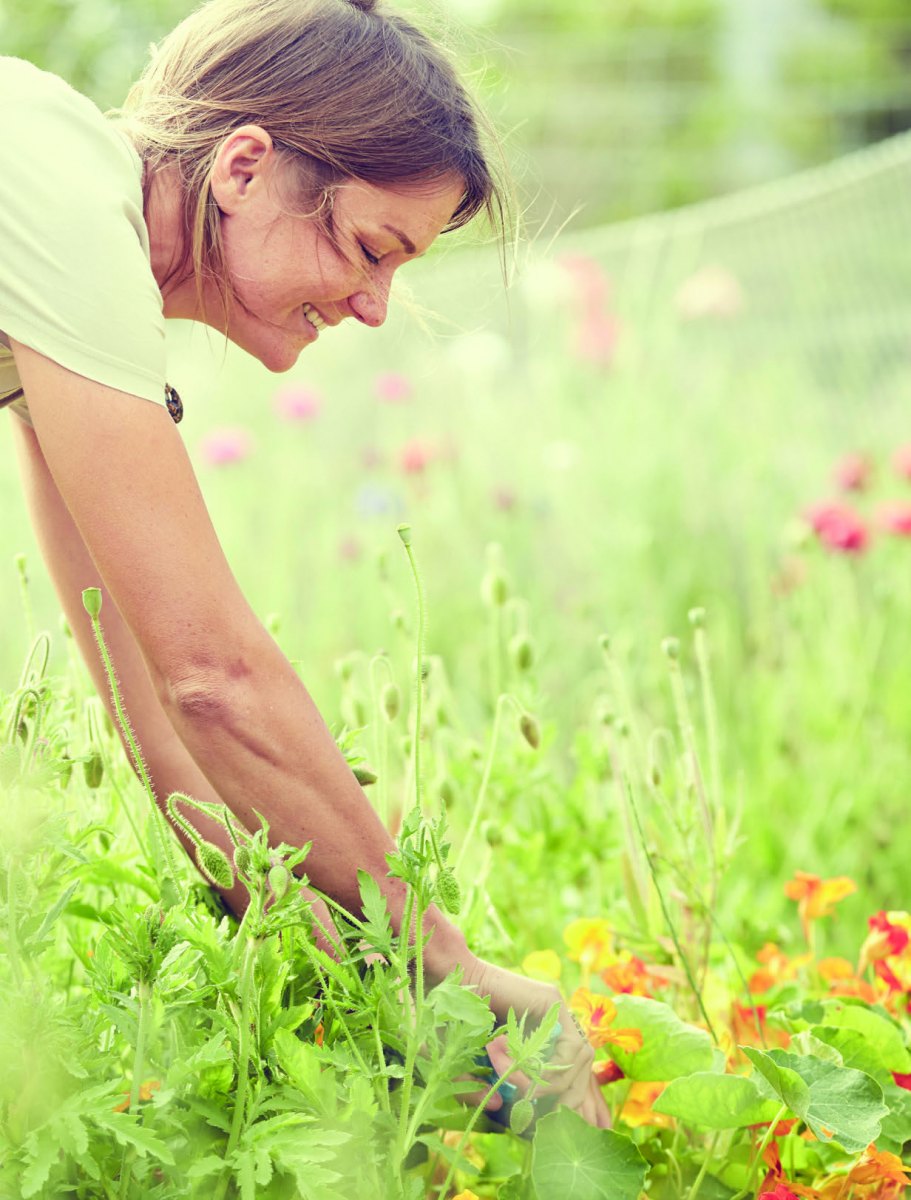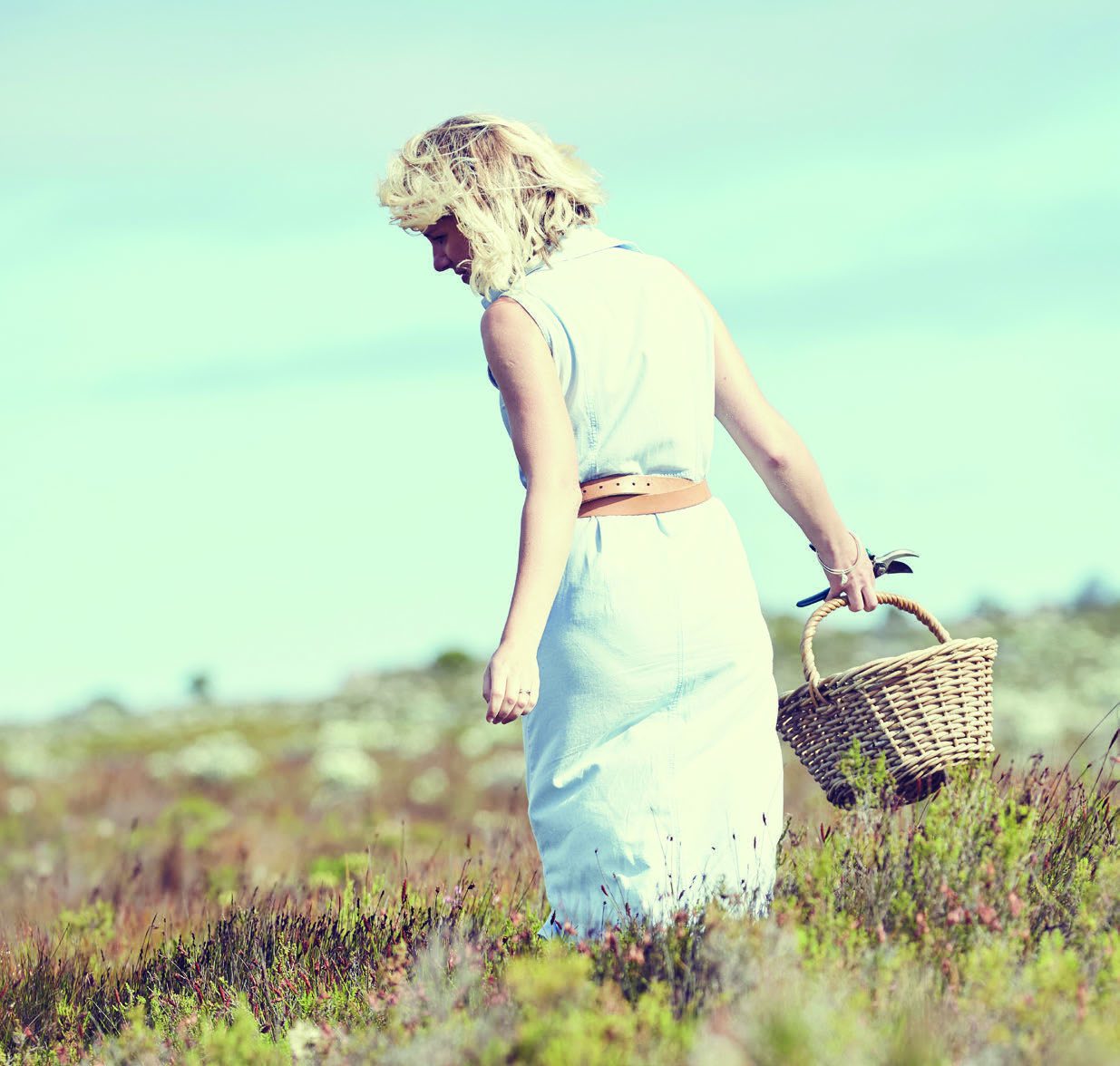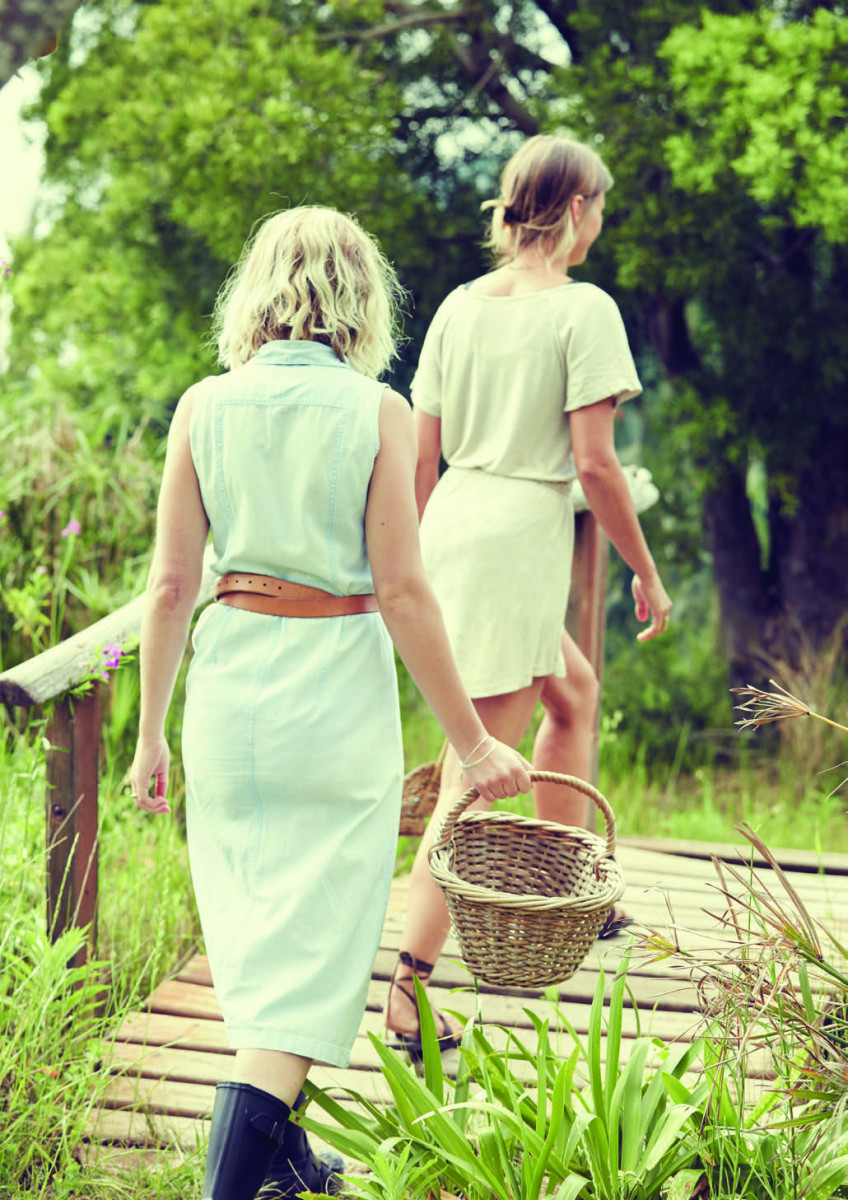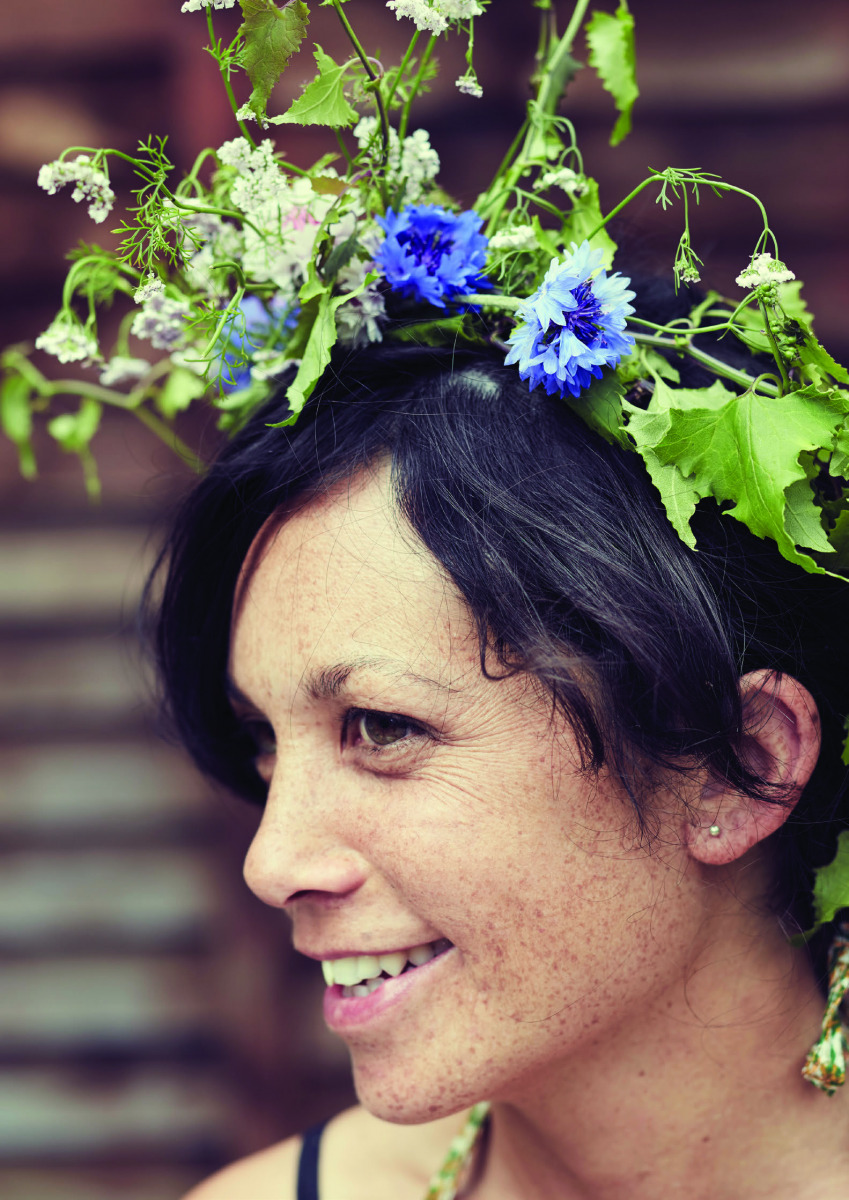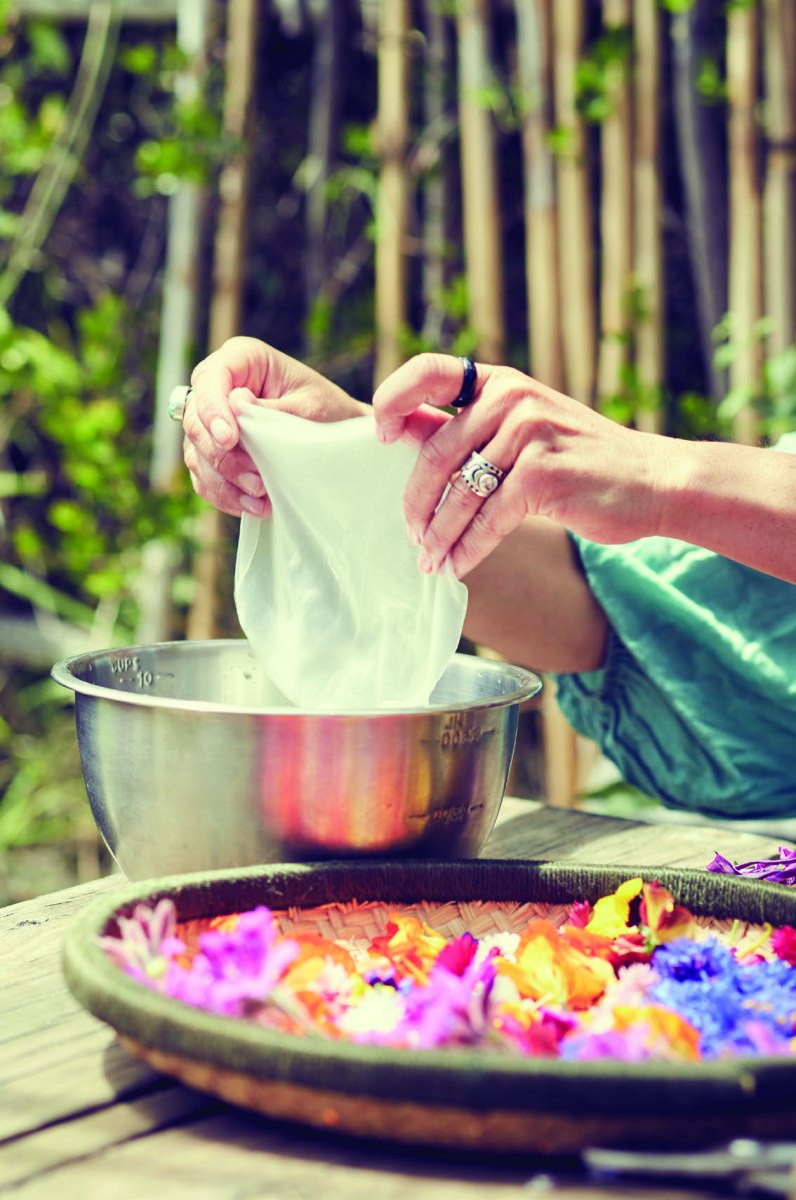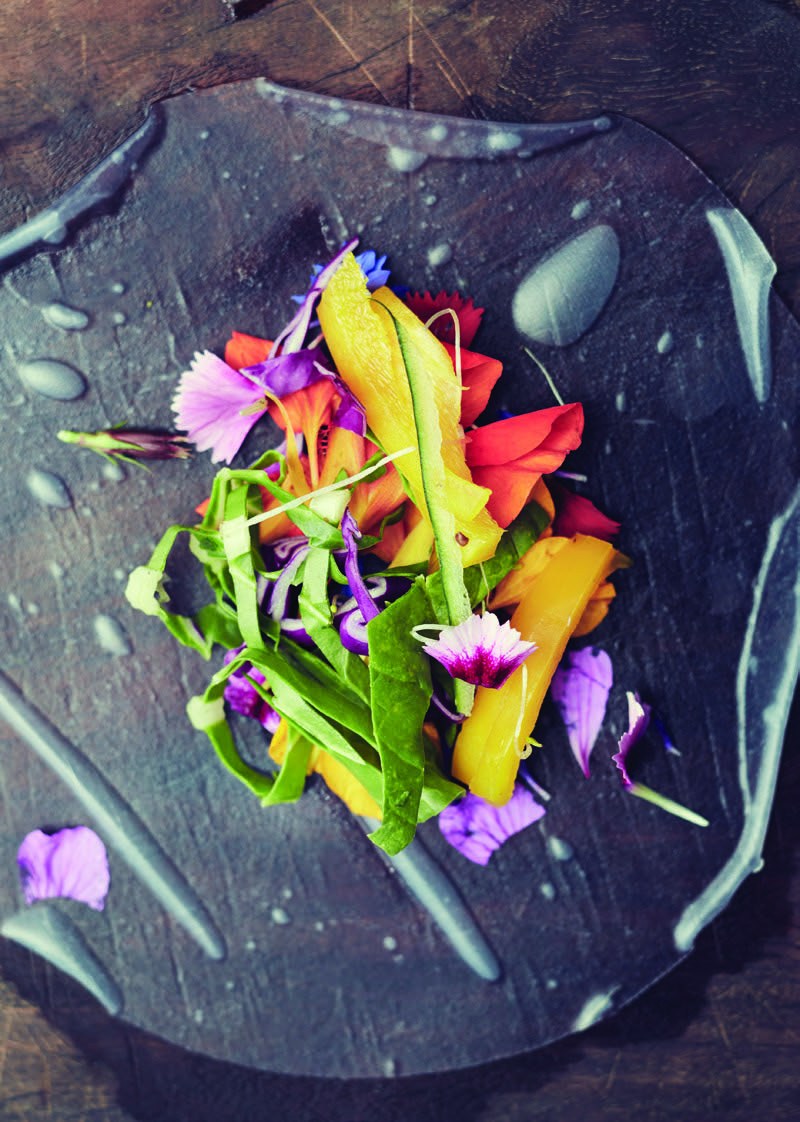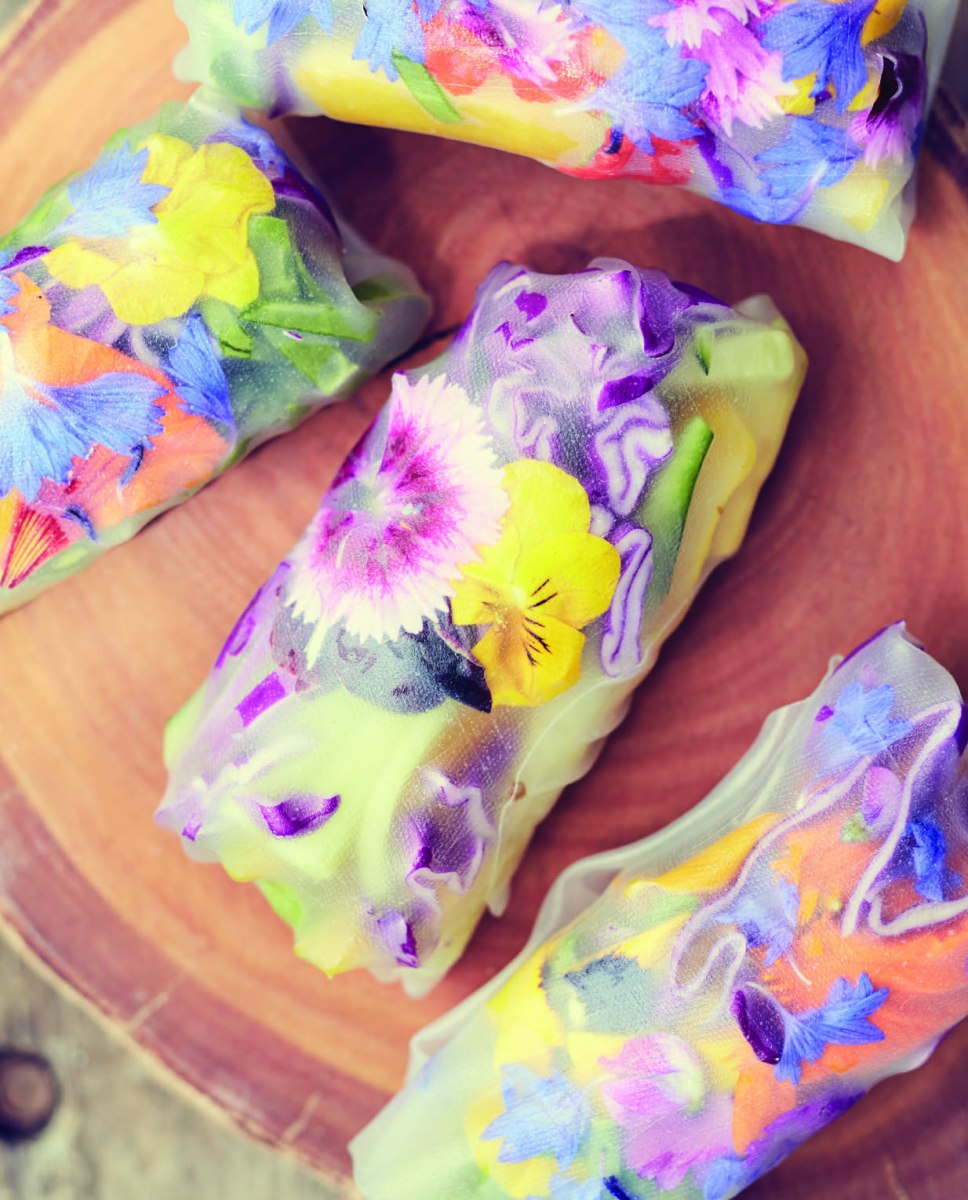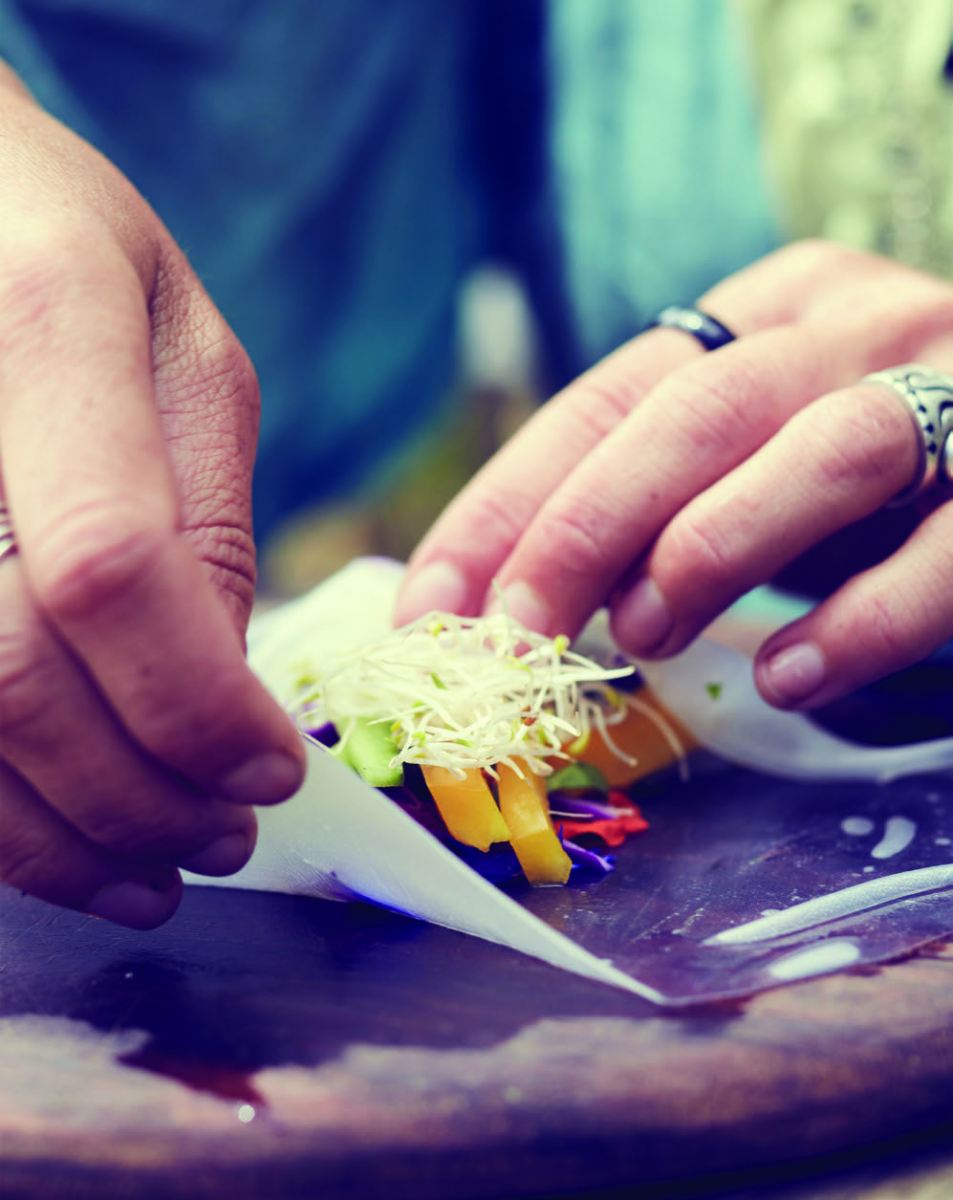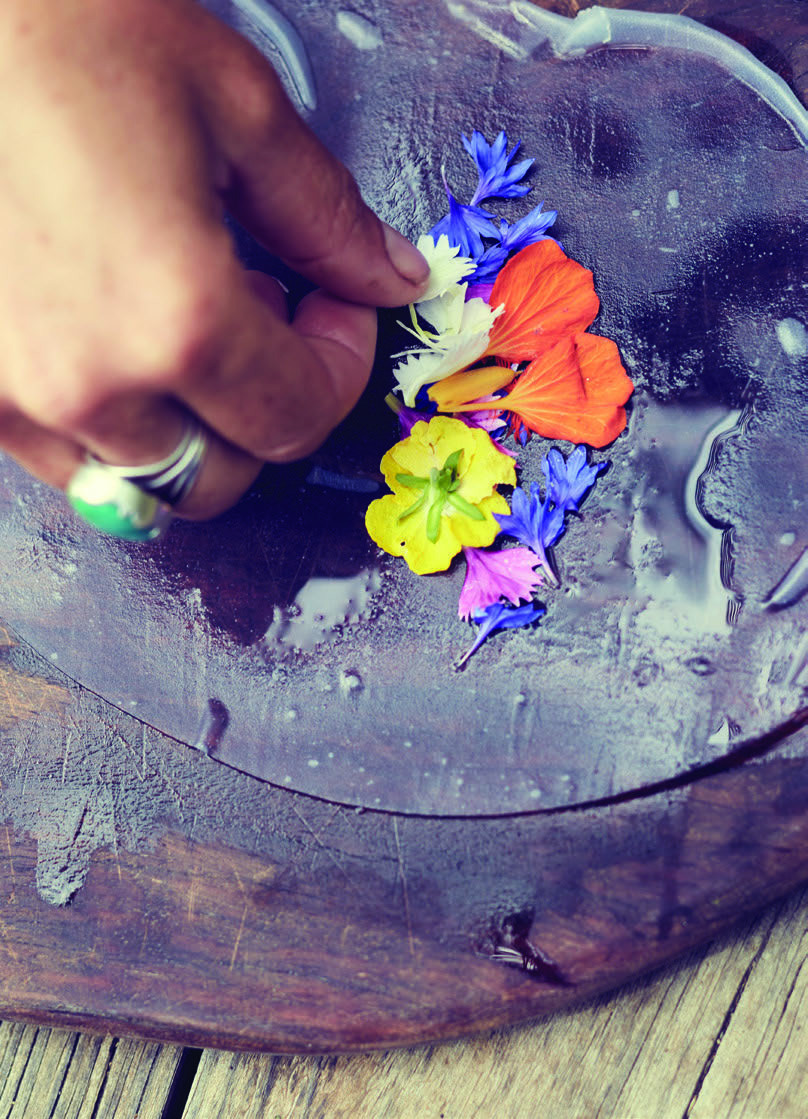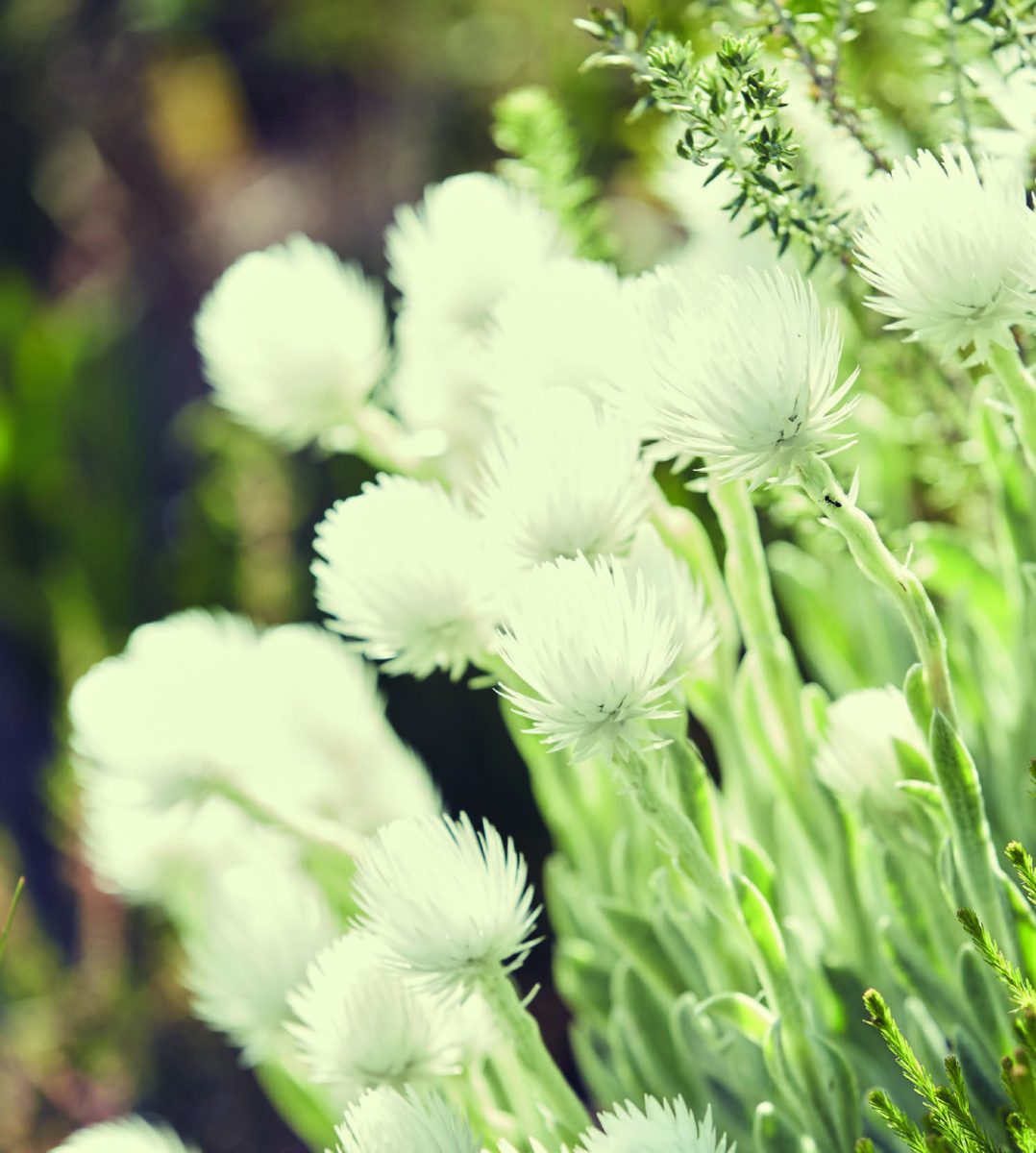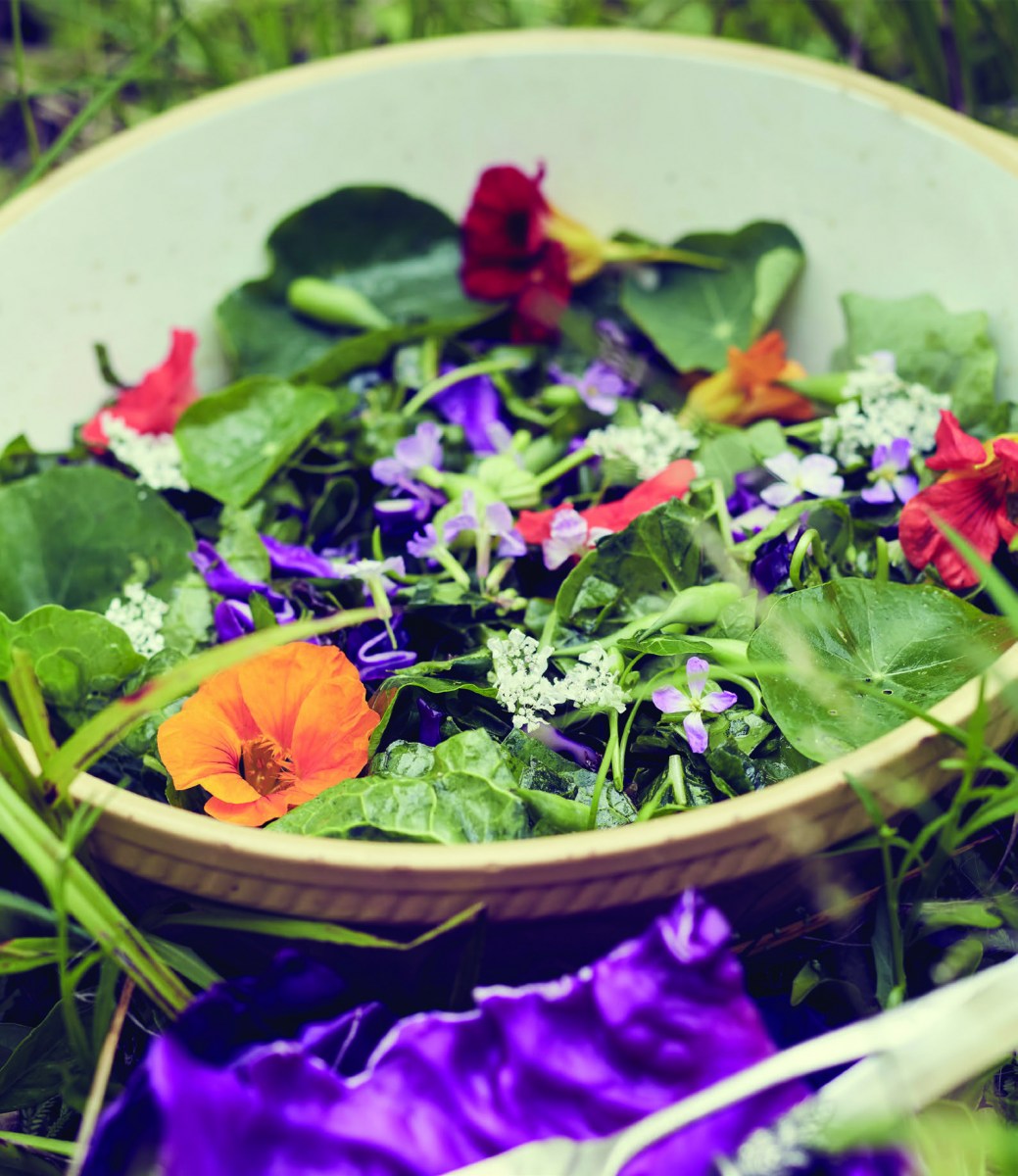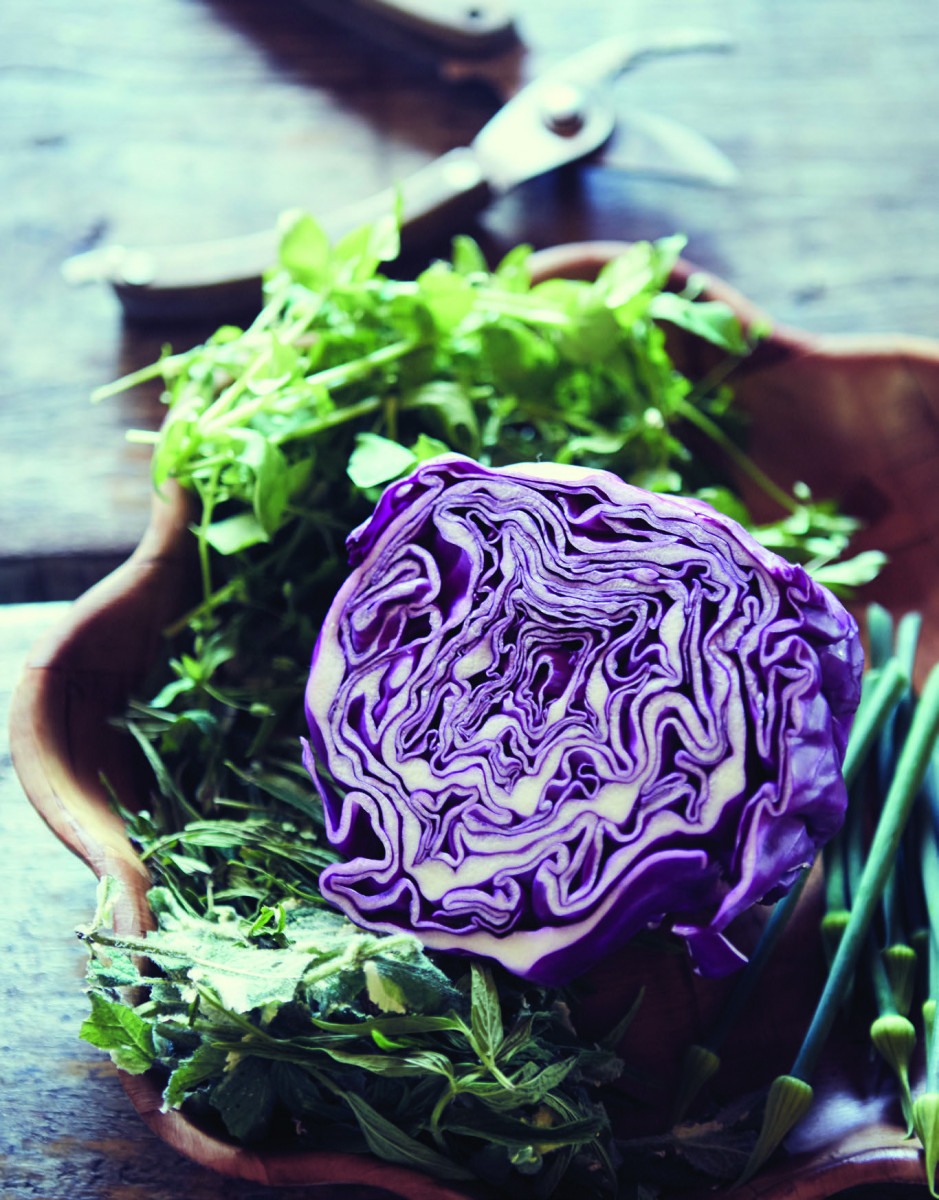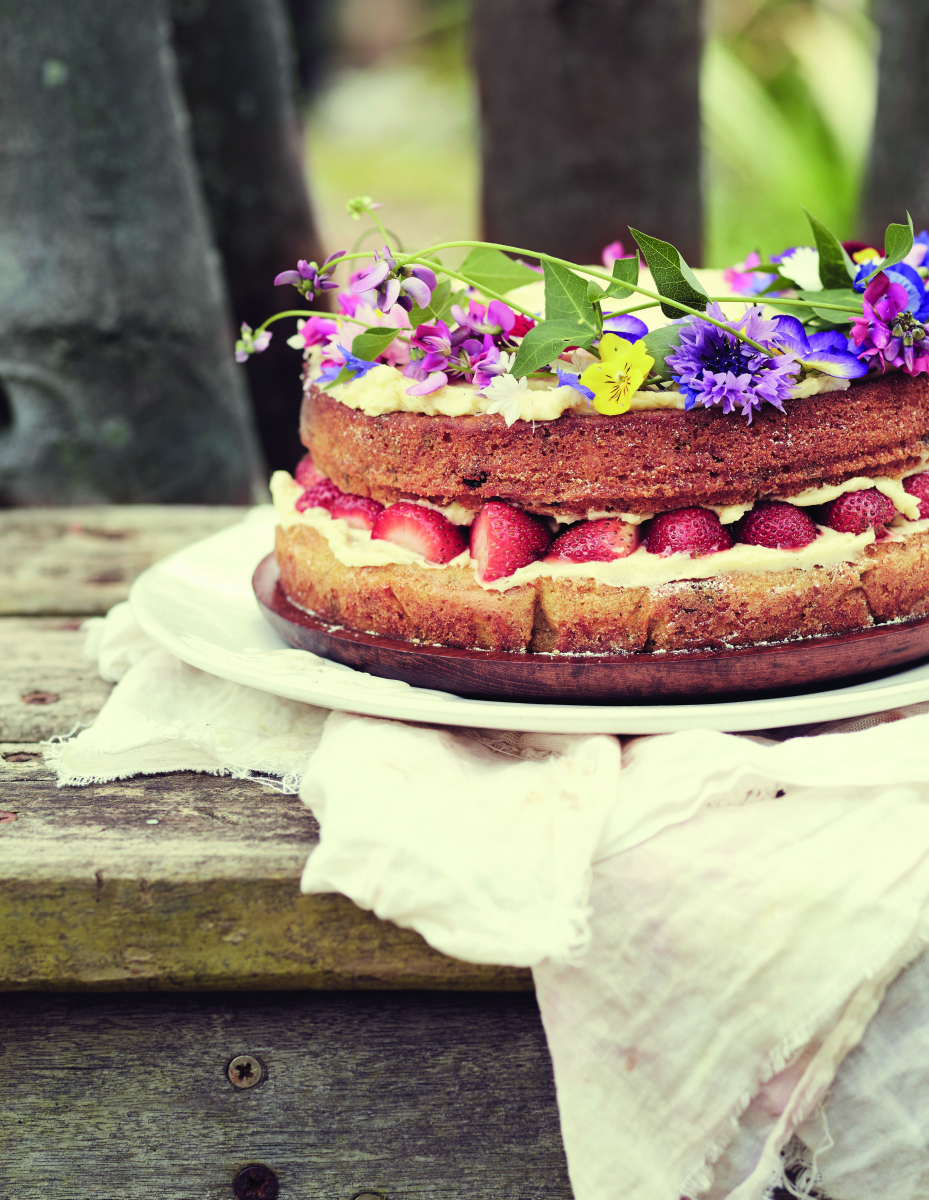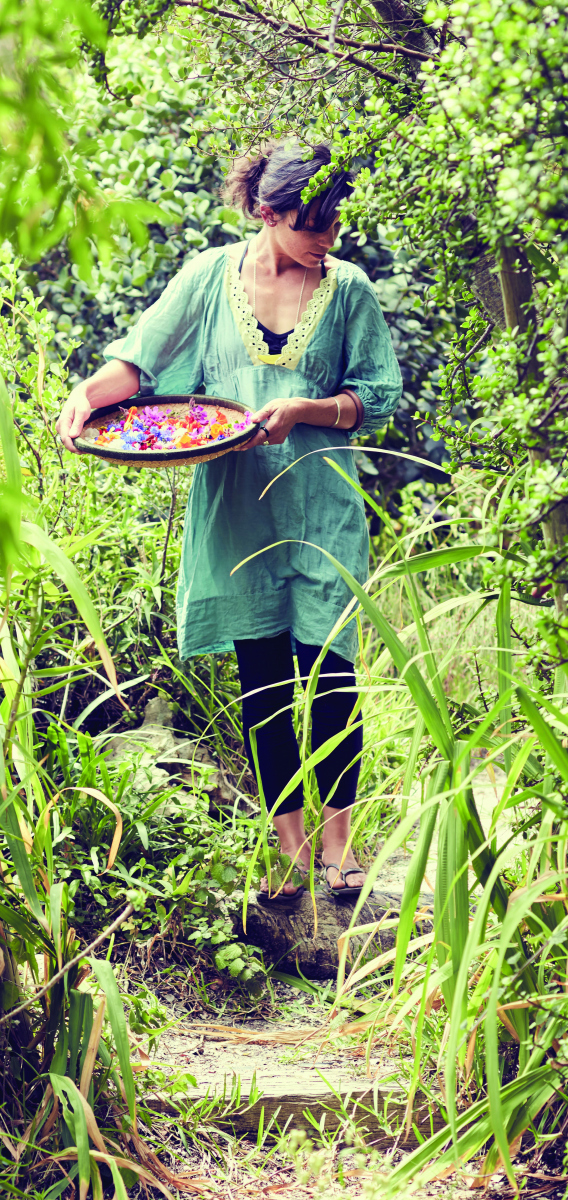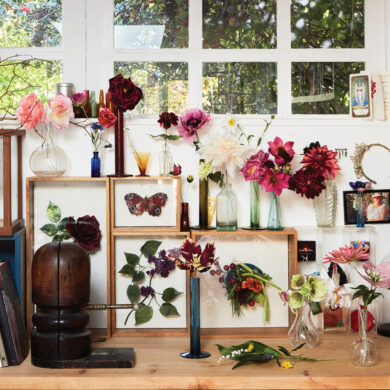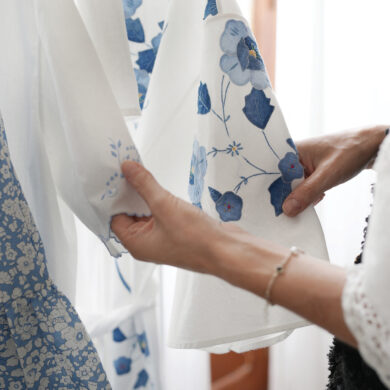If provenance is the food world’s holy grail, then my Veld & Sea classroom is a temple to the movement. Veld means field in Afrikaans but a more accurate description is wild, untouched vegetation. This is especially true of Cape Point, the most southerly point of the famed Cape of Good Hope where I live with my family.
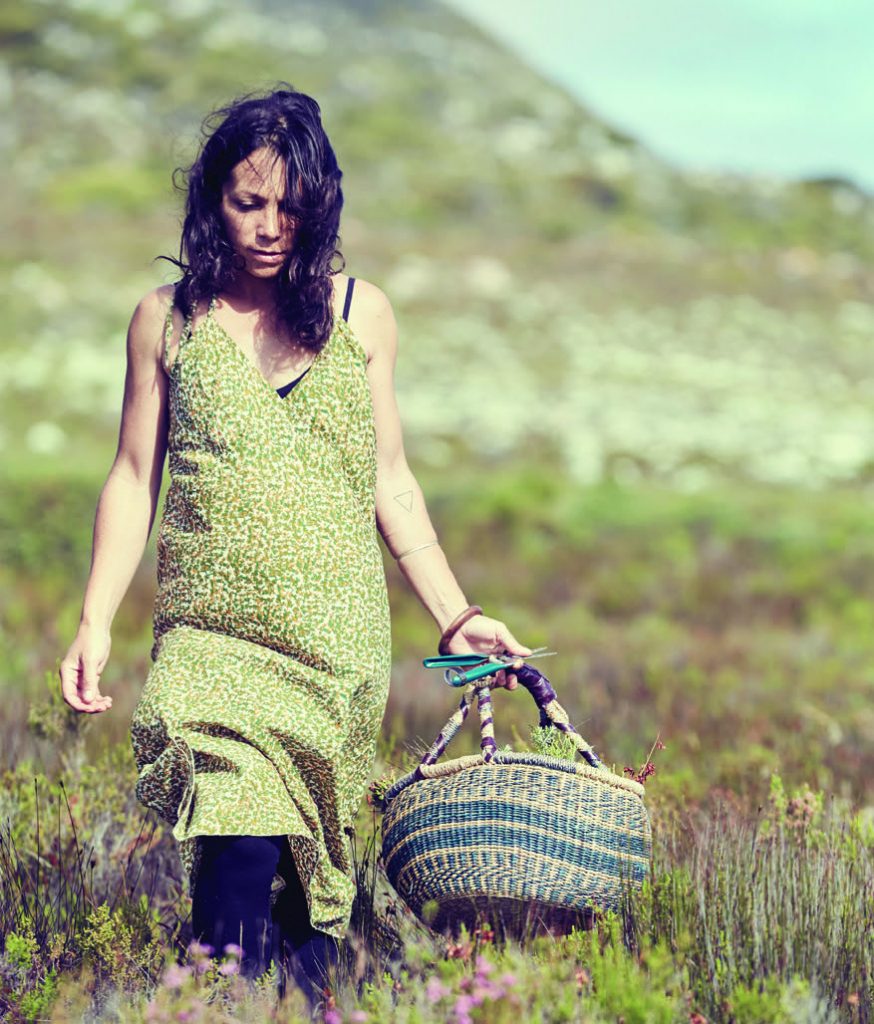
Part of the Table Mountain National Park and home to one of the most biodiverse indigenous plant kingdoms in the world, this protected reserve area is characterized by a treacherous coastline, a landscape carpeted in indigenous fynbos (the local term for the heather- like flowering plant covering) and wild, wild winds. One is truly at the mercy of the elements here. Whether you visit in winter or summer, rain or shine, it is an unrelenting environment featuring a rocky coast that has claimed many passing ships over the centuries. Some 400 years ago, when the Dutch colonists settled in the Cape to grow produce for the passing sea trade, they relied heavily on the local populace for guidance on where to source indigenous edible offerings and equally, what was safe to eat. Crops failed, the weather didn’t play ball and relying on local knowledge was essential to their survival. Much of this information has been lost over the centuries except for a growing group of enthusiasts like me who are intent on rediscovering and sharing our often delicious and always fascinating findings.
Gathering is part of our DNA, we’ve just forgotten about it. I’m glad I can help people rediscover the joy it can bring.
The rustic home I share with my husband, garden landscaper Tom, and our children Tai and Rubi is on the same property as the Good Hope Nursery, founded by my indigenous gardening icon and mother-in-law Gael. Plants and trees that you would be hard pressed to find in commercial nurseries are the order of the day at this bastion of local flora, and amongst waterwise, pro-indigenous gardeners, it’s become a beacon of planting in accordance with the Cape climate.
In recent years, people have made the effort to visit this far-flung nursery, some 60kms from the city, for another reason – my sell out Veld & Sea wild food foraging expeditions. Like any chef worth their salt, I am on a continuous quest to discover new edible opportunities and in my case – wild food flavour marriages.
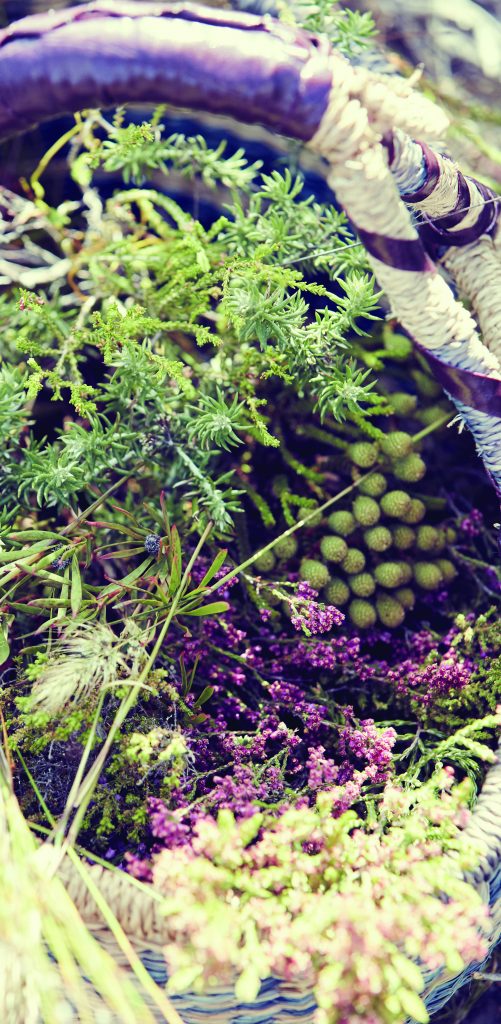
For those who attend my Veld & Sea experiences, it’s a journey that yields many treasures to share. Scheduled a few times a month on the weekends and during the week by appointment, the half day experiences involve fascinating wild food, flower and herb gathering missions in the fynbos-lined slopes up above the nursery and forays into nearby rock pools to gather mussels and whatever other offerings the ocean might yield that day. After a morning of hunting, gathering and absorbing fascinating morsels of information, my guests return to the Veld & Sea classroom to prepare a feast featuring their bounty.
I devise a menu according to what is prolific at that time of year and we go out looking for these and other edible elements essential to the different dishes on the menu. After that we come back and break into groups to prepare for lunch. It’s a really interactive experience and people love discovering that plants they’ve never heard of as well as quite alien things like seaweed are so delicious. Sometimes we have mouth popping, peppery nasturtium pods to sample while we chat. In the winter months, pungent pine ring mushrooms are the prized harvest while in the summer, delicious delicacies from nearby rock pools and nutritious sea vegetables offer a taste of what the ocean has to offer.
Luckily for me, there is a wealth of information available for those who seek information on wild food foraging. The internet, local experts and both historical and recent books yield regular fascinating discoveries for me. I am an intrepid hunter gatherer and I learn something new every time I venture out on a walk. When I first moved here I had no idea what I was doing; I went off into the veld and picked a pretty bunch of flowers and came back to proudly show my family, only to discover I had picked some rare endemic flower. Now I only pick what I know grows prolifically and does not suffer from being cut back a little.
The entire experience is dictated by the seasons and the moon phases that determine the tides.
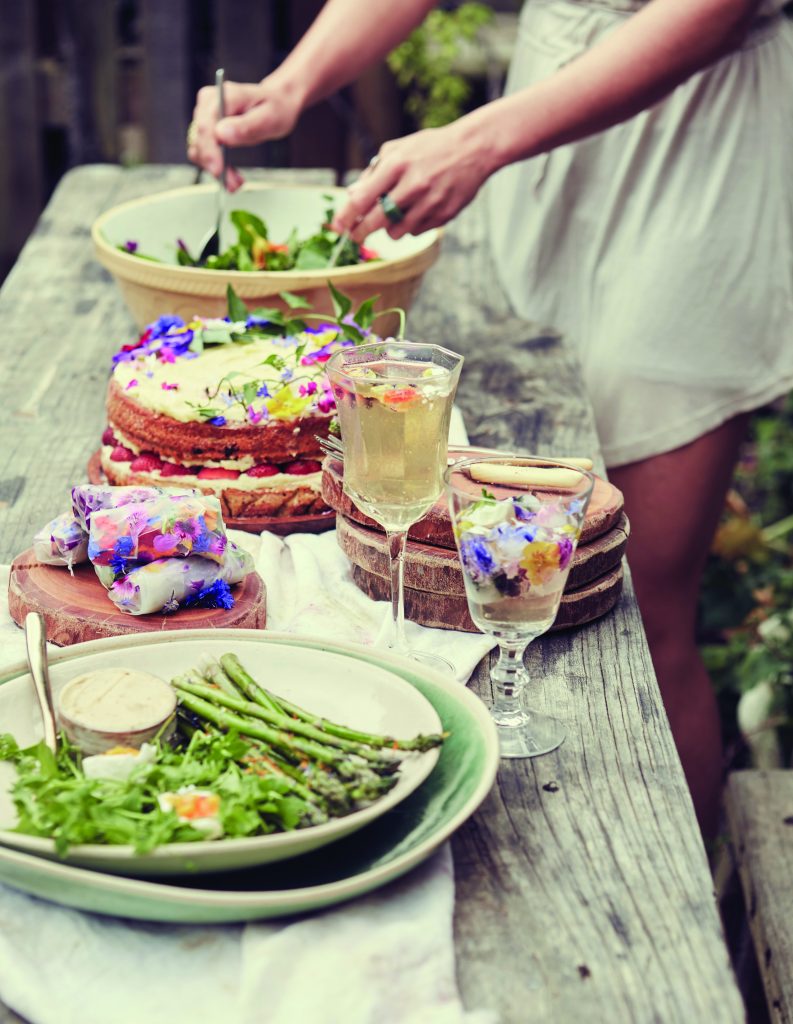
For added flavour and colour as well as medicinal uses, I have planted a variety of edible flowers in my family’s vegetable garden, and workshop participants are given interesting insight to the further layers of flavour these can bring to many dishes. From pansies with their grassy fresh taste to sweet and spicy cornflowers and piquant calendulas, many flowers, I teach, can bring fascinating and mouthwatering depth to food while beautifying things as well.
We eat with our eyes as much as we do our mouths.
I add delicate white coriander flowers to salads, and there are plenty of edible flowers that make excellent partners to drinks too. Chamomile is known for its calming properties and is wonderful in a honey syrup which you can add to gin and tonic or bubbly, while Pelargoniums come in an array of delicious flavours like rose, lemon and peppermint and the leaves make a refreshing and uplifting iced tea.
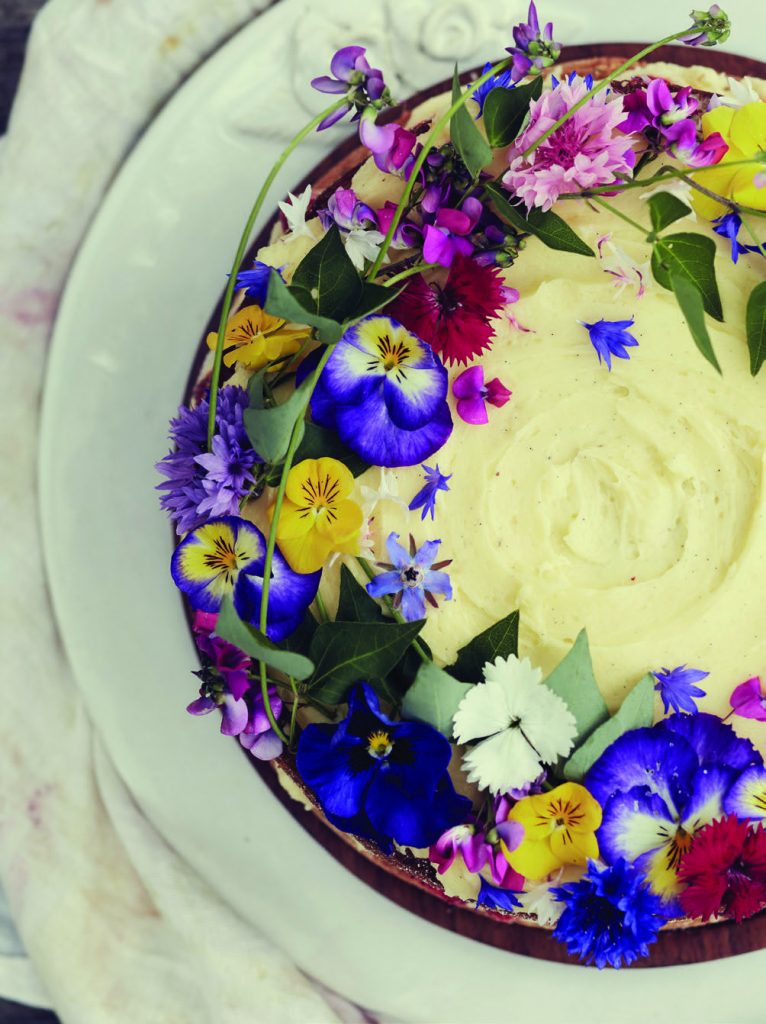
Although I hope it is these nuggets of information that workshop participants take home with them, there is so much more to be had from attending a Veld & Sea day. Unplugging from technology and returning to an ancient way of sustenance, if only for a short time, is immensely gratifying.
Flowers in Drinks
- California poppies make a mild and gentle sedative tea, calming and good for bedtime tea
- Borage is lovely for flavouring water, and with its cucumber flavour it pairs well with gin
- Nasturtiums and Calendula are peppery and spicy and work well as a colourful and flavoursome garnish with chai tea. Steep Calendula petals in gin for a spicy, healing, golden drink.
- Chamomile is known for its calming properties, is wonderful in a honey syrup and in iced tea at the end of a hot day.
Flower Flavours
- Pansies – Viola spp.
- Flavour – grassy, fresh
- Dianthus – Dianthus plumarius.
- Flavour – clove, spicy
- California poppy – Calendula officinalis.
- Flavour – grassy, fresh
- Cornflowers – Centaurea cyanus.
- Flavour – sweet, spicy
- Borage – Borago officinalis.
- Flavour – cucumber, sweet
- Nasturtiums – Tropaeolum.
- Flavour – peppery, spicy, sweet
- Chamomile – Anthemis nobilis.
- Flavour – fresh, grassy, apple
- Calendula – Calendula officinalis.
- Flavour – spicy, piquant
- Pelargonium – Pelargonium spp.
- Flavour – grassy, fresh
- Wild pea – Dipogon lignosus.
- Flavour – sweet, fresh, pea
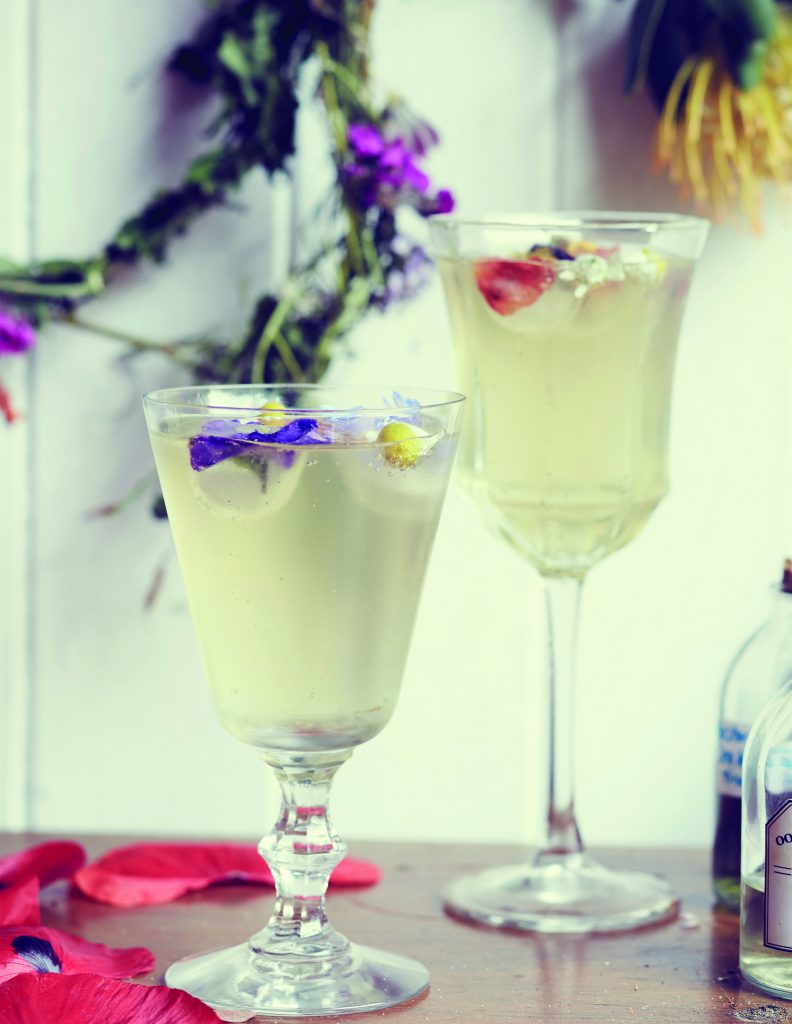
CHAMOMILE COCKTAILS + FLOWER ICE
INGREDIENTS TO MAKE THE CHAMOMILE SYRUP
- 1⁄2 cup of dried or fresh Chamomile flowers or two Chamomile teabags
- 1⁄2 cup of honey
- 1 cup of water
METHOD
Place all the ingredients into a small pot over a low heat. Bring to the boil and then gently simmer for about 15 mins. Remove from heat and strain through a sieve, squeezing the syrup out of the plants/teabag with a spoon against the sieve and decant into a sterilized bottle.
INGREDIENTS TO MAKE THE COCKTAIL
- 3 tbs Chamomile syrup
- 1/3 cup of sparkling wine
- Good quality tonic water
- 1 x lime
METHOD
Pour the syrup and sparkling wine into a glass, top with tonic, add a squeeze of lime and pop in a few flower ice cubes.
If provenance is the food world’s holy grail, then my Veld & Sea classroom is a temple to the movement. Veld means field in Afrikaans but a more accurate description is wild, untouched vegetation. This is especially true of Cape Point, the most southerly point of the famed Cape of Good Hope where I live with my family.

Part of the Table Mountain National Park and home to one of the most biodiverse indigenous plant kingdoms in the world, this protected reserve area is characterized by a treacherous coastline, a landscape carpeted in indigenous fynbos (the local term for the heather- like flowering plant covering) and wild, wild winds. One is truly at the mercy of the elements here. Whether you visit in winter or summer, rain or shine, it is an unrelenting environment featuring a rocky coast that has claimed many passing ships over the centuries. Some 400 years ago, when the Dutch colonists settled in the Cape to grow produce for the passing sea trade, they relied heavily on the local populace for guidance on where to source indigenous edible offerings and equally, what was safe to eat. Crops failed, the weather didn’t play ball and relying on local knowledge was essential to their survival. Much of this information has been lost over the centuries except for a growing group of enthusiasts like me who are intent on rediscovering and sharing our often delicious and always fascinating findings.
Gathering is part of our DNA, we’ve just forgotten about it. I’m glad I can help people rediscover the joy it can bring.
The rustic home I share with my husband, garden landscaper Tom, and our children Tai and Rubi is on the same property as the Good Hope Nursery, founded by my indigenous gardening icon and mother-in-law Gael. Plants and trees that you would be hard pressed to find in commercial nurseries are the order of the day at this bastion of local flora, and amongst waterwise, pro-indigenous gardeners, it’s become a beacon of planting in accordance with the Cape climate.
In recent years, people have made the effort to visit this far-flung nursery, some 60kms from the city, for another reason – my sell out Veld & Sea wild food foraging expeditions. Like any chef worth their salt, I am on a continuous quest to discover new edible opportunities and in my case – wild food flavour marriages.

For those who attend my Veld & Sea experiences, it’s a journey that yields many treasures to share. Scheduled a few times a month on the weekends and during the week by appointment, the half day experiences involve fascinating wild food, flower and herb gathering missions in the fynbos-lined slopes up above the nursery and forays into nearby rock pools to gather mussels and whatever other offerings the ocean might yield that day. After a morning of hunting, gathering and absorbing fascinating morsels of information, my guests return to the Veld & Sea classroom to prepare a feast featuring their bounty.
I devise a menu according to what is prolific at that time of year and we go out looking for these and other edible elements essential to the different dishes on the menu. After that we come back and break into groups to prepare for lunch. It’s a really interactive experience and people love discovering that plants they’ve never heard of as well as quite alien things like seaweed are so delicious. Sometimes we have mouth popping, peppery nasturtium pods to sample while we chat. In the winter months, pungent pine ring mushrooms are the prized harvest while in the summer, delicious delicacies from nearby rock pools and nutritious sea vegetables offer a taste of what the ocean has to offer.
Luckily for me, there is a wealth of information available for those who seek information on wild food foraging. The internet, local experts and both historical and recent books yield regular fascinating discoveries for me. I am an intrepid hunter gatherer and I learn something new every time I venture out on a walk. When I first moved here I had no idea what I was doing; I went off into the veld and picked a pretty bunch of flowers and came back to proudly show my family, only to discover I had picked some rare endemic flower. Now I only pick what I know grows prolifically and does not suffer from being cut back a little.
The entire experience is dictated by the seasons and the moon phases that determine the tides.

For added flavour and colour as well as medicinal uses, I have planted a variety of edible flowers in my family’s vegetable garden, and workshop participants are given interesting insight to the further layers of flavour these can bring to many dishes. From pansies with their grassy fresh taste to sweet and spicy cornflowers and piquant calendulas, many flowers, I teach, can bring fascinating and mouthwatering depth to food while beautifying things as well.
We eat with our eyes as much as we do our mouths.
I add delicate white coriander flowers to salads, and there are plenty of edible flowers that make excellent partners to drinks too. Chamomile is known for its calming properties and is wonderful in a honey syrup which you can add to gin and tonic or bubbly, while Pelargoniums come in an array of delicious flavours like rose, lemon and peppermint and the leaves make a refreshing and uplifting iced tea.

Although I hope it is these nuggets of information that workshop participants take home with them, there is so much more to be had from attending a Veld & Sea day. Unplugging from technology and returning to an ancient way of sustenance, if only for a short time, is immensely gratifying.
Flowers in Drinks
- California poppies make a mild and gentle sedative tea, calming and good for bedtime tea
- Borage is lovely for flavouring water, and with its cucumber flavour it pairs well with gin
- Nasturtiums and Calendula are peppery and spicy and work well as a colourful and flavoursome garnish with chai tea. Steep Calendula petals in gin for a spicy, healing, golden drink.
- Chamomile is known for its calming properties, is wonderful in a honey syrup and in iced tea at the end of a hot day.
Flower Flavours
- Pansies – Viola spp.
- Flavour – grassy, fresh
- Dianthus – Dianthus plumarius.
- Flavour – clove, spicy
- California poppy – Calendula officinalis.
- Flavour – grassy, fresh
- Cornflowers – Centaurea cyanus.
- Flavour – sweet, spicy
- Borage – Borago officinalis.
- Flavour – cucumber, sweet
- Nasturtiums – Tropaeolum.
- Flavour – peppery, spicy, sweet
- Chamomile – Anthemis nobilis.
- Flavour – fresh, grassy, apple
- Calendula – Calendula officinalis.
- Flavour – spicy, piquant
- Pelargonium – Pelargonium spp.
- Flavour – grassy, fresh
- Wild pea – Dipogon lignosus.
- Flavour – sweet, fresh, pea

CHAMOMILE COCKTAILS + FLOWER ICE
INGREDIENTS TO MAKE THE CHAMOMILE SYRUP
- 1⁄2 cup of dried or fresh Chamomile flowers or two Chamomile teabags
- 1⁄2 cup of honey
- 1 cup of water
METHOD
Place all the ingredients into a small pot over a low heat. Bring to the boil and then gently simmer for about 15 mins. Remove from heat and strain through a sieve, squeezing the syrup out of the plants/teabag with a spoon against the sieve and decant into a sterilized bottle.
INGREDIENTS TO MAKE THE COCKTAIL
- 3 tbs Chamomile syrup
- 1/3 cup of sparkling wine
- Good quality tonic water
- 1 x lime
METHOD
Pour the syrup and sparkling wine into a glass, top with tonic, add a squeeze of lime and pop in a few flower ice cubes.




